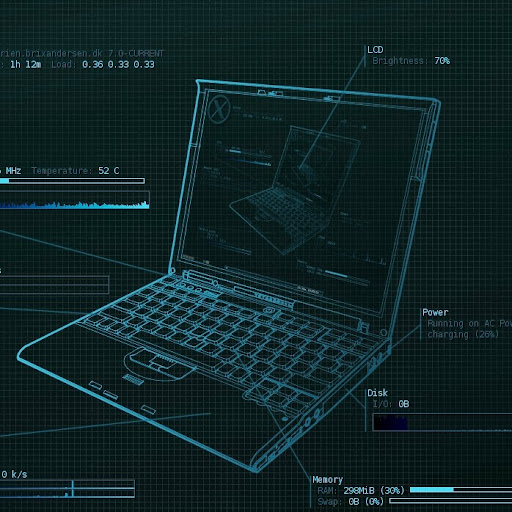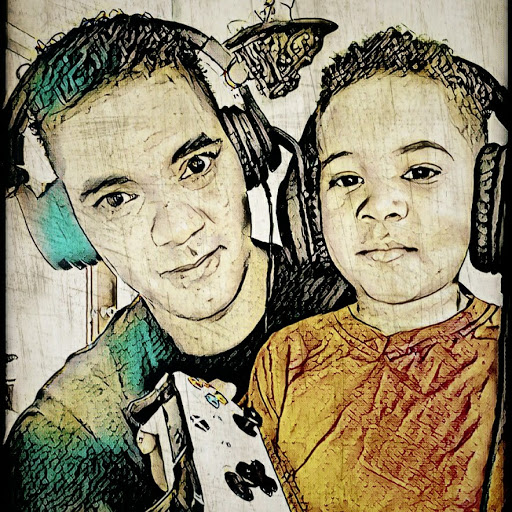Alfredo M Alvarado
age ~68
from Orlando, FL
- Also known as:
-
- Alfredo Moises Alvarado
- Alfredo W Alvarado
- Alfredo M Alverado
- Alfredo M Aluarado
- Jeffrey Alvarado
- Diane Alvarado
- Alex Alvarez
Alfredo Alvarado Phones & Addresses
- Orlando, FL
- 37 Anderson Rd, Ringgold, GA 30736 • 9546082079
- 8721 6Th St NE, Ft Lauderdale, FL 33324
- Oakland Park, FL
- Brooklyn, NY
- Pembroke Pines, FL
Work
-
Company:Lester Schwab Katz & Dwyer, LLP
-
Address:
Specialities
Negligence • Personal Injury • General Liability Practice • Construction & Development • Employment & Labor
Medicine Doctors

Alfredo Alvarado
view sourceSpecialties:
Surgery
Education:
Universidad Nacional De Colombia (1957) Surgery
Isbn (Books And Publications)

Soil Management in Tropical America: Proceedings of a Seminar Held at CIAT, Cali, Colombia, February 10-14, 1974
view sourceAuthor
Alfredo Alvarado
ISBN #
0849013844
Us Patents
-
Magnetic Apparatus For The Treatment Of Cataracts And Other Eye Conditions
view source -
US Patent:7727138, Jun 1, 2010
-
Filed:Jul 7, 2005
-
Appl. No.:11/176516
-
Inventors:Alfredo Alvarado - Weston FL, US
-
International Classification:A61N 2/00
-
US Classification:600 9, 351158
-
Abstract:An apparatus for magnetic therapy of eye conditions such as cataracts, eye floaters, chronic glaucoma, age-related maculopathy, diabetic retinopathy, dry eyes, watery eyes and myopia is disclosed. The apparatus comprises a combination of two bi-polar magnets enclosed in a supportive cover that saddles the upper rim of regular eyeglasses. The magnets are placed in a proper position in front of the affected eye and their polarity can be changed at any time without any difficulty. The magnets are preferably solid discs of Neodymium-Iron-Boron (NdFeB) with a surface strength of 1300 to 1800 gauss.
-
Transabdominal Needle Introducer
view source -
US Patent:7942886, May 17, 2011
-
Filed:Jun 25, 2008
-
Appl. No.:12/145875
-
Inventors:Alfredo Alvarado - Weston FL, US
-
International Classification:A61B 17/04
A61F 2/02 -
US Classification:606144, 606148, 606139, 606151, 623 2372
-
Abstract:A transabdominal needle introducer for the repair of large ventral incisional hernias comprises a handle connected to a long tubular shaft and a disposable needle cartridge at its distal end. The handle has a round knob or head, and a needle pusher to extrude the needles out. The long tubular shaft contains two metal rods disposed inside thereof, one to change the angle of the cartridge, and the other one to extrude the needles. At the proximal end of the tubular shaft there is a rotatable cylindrical control provided with a spiral groove that moves a metal rod destined to pivot the needle cartridge. The second metal rod inside the shaft is assigned to extrude the needles and is connected to a flexible resilient wire that protrudes at the distal end of the tubular shaft and is provided at its distal end with an oval tip that engages a piston-type pusher inside the needle cartridge. There are two straight needles inside the cartridge that are attached to a single strand of suture at each end, and they can be extruded by action of the needle pusher.
-
Lineographic Alphanumeric Data Input System
view source -
US Patent:8174409, May 8, 2012
-
Filed:Sep 13, 2007
-
Appl. No.:11/901152
-
Inventors:Alfredo Alvarado - Weston FL, US
-
International Classification:H03M 11/00
G09G 5/00 -
US Classification:341 22, 345156
-
Abstract:An alphanumeric data input system for entering text into portable electronic devices by making linear traces or taps with a thumb or finger on a touch sensitive lineographic keypad. This keypad is conveniently located on the upper and left part of the electronic device in order to facilitate the natural motion of the thumb thus avoiding fatigue and strain of the same. The system allows the user to enter operational commands on the keypad, as well as entering of letters of different alphabets such as the Latin Alphabet, Mathematical Greek and Russian Alphabets and possibly of alphabets of other foreign languages including Japanese, Chinese and Korean. This system can be used for entering a combination of letters to speed up the writing process, and enables the entering of punctuation marks, typographical symbols and a wide range of mathematical symbols.
-
Laparoscopic Inguinal Hernia Prosthesis
view source -
US Patent:20060015143, Jan 19, 2006
-
Filed:Jun 13, 2005
-
Appl. No.:11/151677
-
Inventors:Alfredo Alvarado - Weston FL, US
-
International Classification:A61B 17/08
-
US Classification:606213000
-
Abstract:An improved composite prosthesis for laparoscopic repair of inguinal or femoral hernias, and also for the laparoscopic repair of large incisional ventral hernias incorporates two different layers, namely an upper layer made of polypropylene mesh to promote tissue ingrowth, and a lower layer formed with an adhesion barrier material to prevent adhesions to the intestines. Both layers are secured together with a highly visible dark seam at the perimeter of the prosthesis to assist the surgeon in visualizing the peripheral edge. The lower layer is slightly larger than the polypropylene mesh so there is an adhesion barrier edge around the prosthesis to conceal the edges of the polypropylene mesh. The upper layer includes a guiding cone to facilitate placement of the prosthesis at the exact center of the hernial defect. The base of this cone is attached to the central part of the prosthesis, and the apex of the cone will be attached later to a guiding thread that is inserted to from the outside of the abdomen using a long straight needle through the skin and hernial sac. Furthermore the laparoscopic hernia prosthesis lower layer is provided with a bounding rim to guide the tip of the spiral tacker to the very edges of the prosthesis in order to stretch the prosthesis in place, and also to conceal the staples or tacks.
-
Hernial Prosthesis For Intraprosthetic Fixation
view source -
US Patent:20060253203, Nov 9, 2006
-
Filed:May 3, 2005
-
Appl. No.:11/121244
-
Inventors:Alfredo Alvarado - Weston FL, US
-
International Classification:A61F 2/02
-
US Classification:623023740, 606151000
-
Abstract:An implantable hernial prosthesis having top and bottom layers and a central sleeve to facilitate manual expansion and placement of the prosthesis within an incision in a patient. The top layer and a bottom layer are secured together with at least one seam at the perimeter of the prosthesis. The top layer is made of a synthetic mesh, preferably polypropylene mesh, to promote incorporation into the abdominal wall, and the bottom layer is made of the same material or in some cases of a mechanical barrier to prevent adhesions to the intestine. The top layer is provided with a central sleeve to introduce one or two fingers to expand the prosthesis in place, and also to introduce an articulated hernial stapler to secure the mesh into the abdominal wall.
-
Multipurpose Knot Pusher
view source -
US Patent:20070156172, Jul 5, 2007
-
Filed:Jan 3, 2006
-
Appl. No.:11/324509
-
Inventors:Alfredo Alvarado - Weston FL, US
-
International Classification:A61B 17/00
-
US Classification:606207000
-
Abstract:A surgical multipurpose knot pusher that allows an extracorporeal knot to be slid down around a limb of suture without deforming or collapsing the knot. This knot pusher includes a handle portion and an elongated shaft extending from the handle portion to the distal part of the instrument. This distal part is provided with two jaws and one of them, the lower one, has a shallow oblique groove. With the jaws open the suture thread is placed in the shallow oblique groove and then retained captive when the jaws are closed. The jaws of the instrument can incorporate a suture cutter in the form of small scissors.
-
Door Lock For Vehicle With Seat Belt System
view source -
US Patent:51727897, Dec 22, 1992
-
Filed:Nov 21, 1991
-
Appl. No.:7/795824
-
Inventors:Alfredo Alvarado - Fort Lauderdale FL
-
International Classification:B60R 2206
-
US Classification:180268
-
Abstract:This is a door lock arrangement which is operated by a slide on a vehicle door, which slide is the actuator of a seat belt system for a seat next to the door. As the door is closed, the slide moves along the door to operate this door lock as well as to put the seat belt system in its operating position restraining a person who is sitting on this seat. The door lock includes a socketed keeper mounted on a door post behind the door, a holder mounted on the door, a lock bolt slidable in this holder and engageable in the socket of the keeper, and a spring biasing the lock bolt out of engagement with the keeper and into the path of movement of the slide as the door is closing.
-
Seat Belt System For Motor Vehicle
view source -
US Patent:51491338, Sep 22, 1992
-
Filed:Apr 9, 1991
-
Appl. No.:7/682357
-
Inventors:Alfredo Alvarado - Fort Lauderdale FL
-
International Classification:B60R 2206
-
US Classification:280804
-
Abstract:This is a seat belt system for a motor vehicle which has a belt retractor behind the inboard rear corner of the seat, a belt guide next to the inboard side of the head rest, a slip ring on a slide in an upwardly and forwardly inclined guideway in the vehicle door next to that seat, and an anchor next to the inboard side of the seat in front of the belt retractor. The seat belt extends up from the retractor behind the back rest of the seat, slidable through the belt guide at the inboard side of the head rest, downward and laterally outward diagonally across the front of the back rest from the guide to the slide on the door, and slidably through the slip ring on that slide back across the seat to the anchor.
Name / Title
Company / Classification
Phones & Addresses
Director
Honor Flight Rio Grande Valley
Managing
Elite Dynamics Group, LLC
Manager
Blue Trading LLC
Whol Ink Ribbon · Whol Stationery/Office Supplies
Whol Ink Ribbon · Whol Stationery/Office Supplies
9272 NW 101 St, Miami, FL 33178
2700 NW 112 Ave, Miami, FL 33172
9362 NW 101 St, Miami, FL 33178
3056713697
2700 NW 112 Ave, Miami, FL 33172
9362 NW 101 St, Miami, FL 33178
3056713697
Administration
St Barnabas Nursing Home, Inc
Skilled Nursing Care Facility
Skilled Nursing Care Facility
2175 Quarry Rd, Bronx, NY 10457
7189603900
7189603900
President
Alfredo Alvarado, M.D., PA
2711 Kinsington Cir, Ft Lauderdale, FL 33332
Director
B.A.M. Innovations, Inc
1401 SW 82 Ave, Ft Lauderdale, FL 33324
President, Director
OEC PARTNERSHIP, INC
Whol Furniture
Whol Furniture
684 E Altamonte Dr, Altamonte Springs, FL 32701
1601 N W 80 Blvd, Gainesville, FL 32606
1601 NW 80 Blvd, Gainesville, FL 32606
4076282400
1601 N W 80 Blvd, Gainesville, FL 32606
1601 NW 80 Blvd, Gainesville, FL 32606
4076282400
Manager
Get Paid 2 Recycle LLC
Refuse System
Refuse System
9362 NW 101 St, Miami, FL 33178
9272 NW 101 St, Miami, FL 33178
9272 NW 101 St, Miami, FL 33178
License Records
Alfredo L Alvarado Jr
License #:
5048 - Active
Category:
Nursing Home Administrator
Issued Date:
Feb 25, 2004
Alfredo Alvarado
License #:
32892 - Expired
Category:
Dual Towing Operator(IM)/VSF Employee
Expiration Date:
Nov 10, 2015
Alfredo Alvarado
Address:
Ft Lauderdale, FL 33317
License #:
MD030721L - Expired
Category:
Medicine
Type:
Medical Physician and Surgeon
Alfredo Alvarado
Address:
2711 Kinsington Cir, Weston, FL
5000 W Oakland Blvd, Ft Lauderdale, FL
Phone:
9545811356
License #:
35016 - Expired
Category:
Health Care
Issued Date:
Oct 31, 1979
Effective Date:
Dec 14, 2006
Expiration Date:
Jan 31, 2007
Type:
Medical Doctor
Lawyers & Attorneys

Alfredo Javier Alvarado, New York NY - Lawyer
view sourceAddress:
Lester Schwab Katz & Dwyer, LLP
120 Broadway 38Th Floor, New York, NY 10271
2123414232 (Office), 2122675916 (Fax)
120 Broadway 38Th Floor, New York, NY 10271
2123414232 (Office), 2122675916 (Fax)
Licenses:
New York - Currently registered 1992
Education:
Tulane University Law School
Degree - JD - Juris Doctor - Law
Graduated - 1990
Tulane University
Degree - BA - Bachelor of Arts
Graduated - 1987
Degree - JD - Juris Doctor - Law
Graduated - 1990
Tulane University
Degree - BA - Bachelor of Arts
Graduated - 1987
Specialties:
Litigation - 40%
Construction / Development - 20%
Personal Injury - 20%
Employment / Labor - 20%
Construction / Development - 20%
Personal Injury - 20%
Employment / Labor - 20%
Associations:
Hispanic Bar Association - Member
New York County Lawyers' Association - Member
New York State Trial Lawyers Association - Member
New York State Trial Lawyers Institute - Member
New York County Lawyers' Association - Member
New York State Trial Lawyers Association - Member
New York State Trial Lawyers Institute - Member

Alfredo Javier Alvarado, Millburn NJ - Lawyer
view sourceAddress:
Lester Schwab Katz & Dwyer, LLP
24 Lackawanna Pl, Millburn, NJ 07041
9739129501 (Office)
24 Lackawanna Pl, Millburn, NJ 07041
9739129501 (Office)
Licenses:
New Jersey - Active 1991

Alfredo Alvarado - Lawyer
view sourceOffice:
Lester Schwab Katz & Dwyer, LLP
Specialties:
Negligence
Personal Injury
General Liability Practice
Construction & Development
Employment & Labor
Personal Injury
General Liability Practice
Construction & Development
Employment & Labor
ISLN:
901529686
Admitted:
1991
University:
Tulane University, B.A., 1987
Law School:
Tulane University, J.D., 1990

Alfredo Alvarado - Lawyer
Googleplus

Alfredo Alvarado
Work:
Decoraciones Alvarado - Ebanista (1998)
Education:
Instituto tecnológico de orizaba - Ingeniería en sistemas computacionales

Alfredo Alvarado
Work:
Am-odontologos - Cirujano dentista principal (2008)
Education:
Alas perunas

Alfredo Alvarado
Work:
World Wrestling Entertainment
Education:
Centro Escolar atolico PIO XII
Tagline:
Amar A Dios

Alfredo Alvarado
Work:
Copa Airlines - Bartender (2011)
Education:
Universidad autonoma de Santo Domingo - Licenciatura en Contabilidad

Alfredo Alvarado
Education:
East central high school - Grad, Palo alto college - Freshman
Tagline:
Independent, and realistic person

Alfredo Alvarado

Alfredo Alvarado
Tagline:
Calzado Dotacion

Alfredo Alvarado
Flickr
Youtube
Myspace
Plaxo

Alfredo Alvarado
view sourceQuerétaro, MéxicoLíder de Proyectos at GAOP CONSTRUCCIONES S A DE C...

Alfredo Alvarado
view sourceLester Schwab Katz Dwyer

Alfredo Alvarado
view source
Alfredo E Alvarado
view source
Alfredo Jr Alvarado
view source
Alfredo Alvarado Jr.
view source
Alfredo J. Alvarado
view source
Alfredo Alvarado
view source
Alfredo Alvarado
view source
Alfredo Alvarado
view sourceClassmates

Alfredo Alvarado
view sourceSchools:
Central High School Pueblo CO 1976-1980
Community:
Annette Montez

Alfredo Alvarado
view sourceSchools:
Academia Del Sagrado Corazon Santurce NJ 1990-1994
Community:
Agnes Pineiro, Jorge Quesne, Matt Teasdale, Marilyn Wherry

Alfredo Alvarado
view sourceSchools:
Morristown-Beard High School Morristown NJ 1979-1983
Community:
Helen Fuller, Donna Mowbray, Katherine Frazier, Glenn Walter, Rob Schaffer, Kevin Charette, Pete Peterman, Dawn Reichardt, Leonard Johnson, Janet Clowney, Denise Zentner

Alfredo Alvarado
view sourceSchools:
Hostos-Lincoln Academy of Science Bronx NY 1993-1997
Community:
Josefina Lopez, Jose Pineiro, Joanna Lequerica, Thais Flores, Juan Pena, Glasmiri Pallero, Omar Diaz, William Torres, Yahaira Mercedes, Miraida Diaz, Mike Daniels

University of St. Thomas,...
view sourceGraduates:
Katherine Alvarado (2002-2006),
Lisa Arkus (1993-1997),
Alfredo Alvarado (1998-1999),
James Fleming (1977-1978)
Lisa Arkus (1993-1997),
Alfredo Alvarado (1998-1999),
James Fleming (1977-1978)

Holy Ghost School, Housto...
view sourceGraduates:
Alfredo Alvarado (1972-1980),
Paul Lo (1977-1978),
Carolyn Gordy (1950-1958),
Stephanie Stevens (1978-1980)
Paul Lo (1977-1978),
Carolyn Gordy (1950-1958),
Stephanie Stevens (1978-1980)

Canutillo High School, Ca...
view sourceGraduates:
Bertha Chavez (1985-1989),
Pete Barraza (1982-1986),
Kristel Hernandez (2002-2006),
Alfredo Alvarado (1981-1985)
Pete Barraza (1982-1986),
Kristel Hernandez (2002-2006),
Alfredo Alvarado (1981-1985)
Get Report for Alfredo M Alvarado from Orlando, FL, age ~68


























